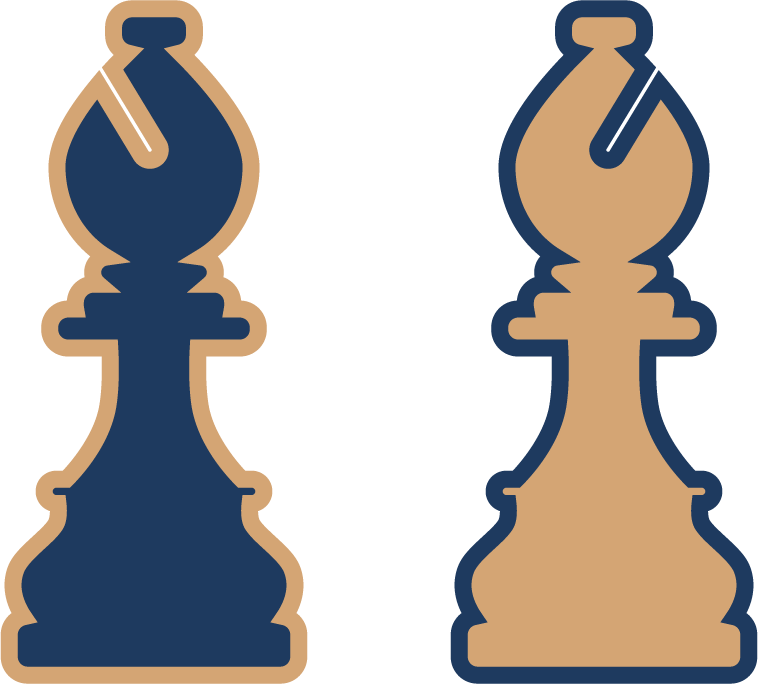Have you ever wondered how some people manage to devour dozens of books each year while others struggle to finish one? Warren Buffett, one of the world’s most successful investors, spends 80% of his workday reading and credits his success to the compound knowledge gained from books. His daily habit of consuming over 500 pages is a testament to the transformative power of consistent reading.
Like many, I once found myself trapped in the endless scroll of online content. But shifting to proactive book consumption changed everything. By adopting a simple 20-pages-per-day strategy, I went from reactive reading to finishing over 30 books in a year. Books offer depth, quality, and insights that digital content often lacks.
If you’re ready to break free from distractions and make reading a priority, this guide will show you how. From overcoming time constraints to building a sustainable routine, you’ll discover actionable steps to elevate your reading game.
Key Takeaways
- Warren Buffett’s daily reading habit highlights the value of consistent learning.
- Books provide deeper insights compared to digital content.
- A 20-pages-per-day strategy is an achievable starting point.
- Overcoming distractions is key to building a reading routine.
- Small, consistent efforts can lead to significant progress over time.
Why Reading More Books Matters
What if a simple habit could transform your brain and enrich your life? Reading isn’t just about passing time—it’s a powerful tool for personal growth. Studies show that engaging with books builds cognitive reserve, which can help prevent conditions like Alzheimer’s. This mental exercise keeps your brain sharp and resilient over time.
Literary fiction, in particular, has been linked to improved empathy and emotional intelligence. By immersing yourself in diverse characters and stories, you develop a deeper understanding of others’ perspectives. This moral sensitivity can enhance your relationships and decision-making in everyday life.
Nonfiction, on the other hand, expands your expertise and critical thinking. Whether it’s history, science, or self-help, these books provide actionable insights that can shape your worldview. Unlike passive digital consumption, active reading requires focus and engagement, leading to more meaningful learning.
James Clear, author of “Atomic Habits,” emphasizes that small, consistent efforts compound into transformative results. Even reading just 20 pages a day can add up to over 30 books in a year. This approach makes reading a sustainable habit rather than a daunting task.
By prioritizing books over fleeting digital content, you invest in long-term growth. Reading challenges your mind, broadens your knowledge, and enriches your life in ways that few other activities can. Start small, stay consistent, and watch the benefits unfold.
Common Barriers to Reading More Books
Why do so many people struggle to finish a book despite wanting to read more? Surveys show that 37% of U.S. adults wish they could read more, and 77% of French readers share the same desire. Yet, many find themselves stuck in a cycle of unread books, a phenomenon known as tsundoku in Japanese culture.

One of the biggest hurdles is time management. Modern schedules are packed with urgent tasks, leaving little room for leisurely activities like reading. Ed Needham, editor of Strong Words magazine, reads 5,000 pages weekly by prioritizing reading over less meaningful tasks. For most people, carving out even 20 minutes a day can feel impossible.
Time Management Challenges
Balancing work, family, and personal commitments often pushes reading to the bottom of the to-do list. Clare Reynolds, a working mother, describes her “reading wilderness” phase, where work and family demands left no space for books. Without intentional planning, reading becomes a luxury rather than a habit.
Digital Distractions
Smartphones and streaming platforms compete for our attention, making it harder to focus on books. John Waters, a filmmaker and avid reader, avoids TV entirely to dedicate more time to reading. Many fall into the trap of “reactive reading,” scrolling through social media links instead of diving into a book. This constant distraction can derail even the best intentions.
Overcoming these barriers requires awareness and small, consistent changes. By identifying what’s holding you back, you can take the first step toward building a sustainable reading habit.
Practical Tips to Read More Books
Small, daily actions can lead to significant progress in your reading journey. By focusing on achievable goals and integrating reading into your daily life, you can build a sustainable habit that lasts.
Set a Daily Reading Goal
Start with a manageable target, like 20 pages a day. This approach adds up to over 30 books in a year. Break it into smaller chunks, such as 30-minute morning sessions or 10 minutes before bed. Consistency is key.
James Clear’s “two-minute rule” is a great way to begin. Commit to reading just one page to overcome inertia. Often, you’ll find yourself reading more once you start.
Create a Reading Routine
Pair reading with existing habits to make it seamless. Enjoy a book with your morning coffee or during your commute. Audiobooks are a fantastic option for multitasking, like listening to “Remarkably Bright Creatures” while doing chores.
For example, the author found success by combining gratitude journaling with reading. This pairing created a natural transition into a focused reading session. Find what works for you and stick to it.
By integrating reading into your routine, it becomes a natural part of your day. Over time, these small efforts compound into a transformative habit.
How to Make Reading a Priority
What if you could reclaim hours of your day for something truly enriching? Many of us spend valuable time on activities that don’t add much to our life. By assessing your daily routines and making intentional changes, you can carve out space for reading.

Assess Your Current Habits
Start by tracking how you spend your time. Use a time diary to identify moments that could be better spent. For example, lunch breaks or train rides often offer hidden windows for reading. Clare Reynolds, a working mother, revived her love for books by replacing social media scrolling with library visits.
Replace Unproductive Activities
Benjamin Gardner’s habit substitution theory suggests linking new habits to specific cues. Pair reading with existing routines, like post-dinner relaxation or morning coffee. Ed Needham, editor of Strong Words magazine, replaced TV time with books, dedicating hours to meaningful reading.
John Waters, a filmmaker, avoids TV entirely to prioritize reading. This approach can help you focus on enriching activities instead of mindless distractions. Swap low-value habits with reading to make it a natural part of your life.
By auditing your daily routines and replacing unproductive things, you can create a sustainable reading habit. Small changes, like choosing Melanie Dobson’s “The Wings of Poppy Pendleton” over streaming, can lead to significant progress over time.
Building a Reading Habit That Lasts
How can you turn reading into a lifelong habit that sticks? The key lies in starting small and using strategies that make reading a natural part of your day. By focusing on consistency and creating the right environment, you can build a routine that lasts.
Start Small and Build Up
Begin with modest goals, like reading for just 5 minutes a day. This approach helps you build consistency without feeling overwhelmed. Benjamin Gardner’s research shows that habits become automatic after about 2 weeks. Stick to your routine, and soon, reading will feel like second nature.
James Clear’s habit stacking technique can also help. Pair reading with an existing habit, like your morning coffee or evening wind-down. Over time, these small efforts compound into a transformative habit.
Use Action Associations
Design your environment to support your reading goals. Keep physical or digital books visible and easily accessible. This strategy, inspired by Atomic Habits, makes it easier to choose reading over distractions.
Joining a book club, like Rebel Book Club or Goodreads, adds social accountability. Sharing your progress with others keeps you motivated and engaged. For identity-affirming literature, consider Heidi Chiavaroli’s “The Way Back,” which aligns with personal growth themes.
By starting small and using action associations, you can create a reading habit that lasts. Over a year, these consistent efforts will lead to significant progress and a deeper love for books.
Conclusion
Building a consistent reading habit can transform your daily life in profound ways. By setting small goals, like 20 pages a day, you can finish over 30 books in a year. This approach, inspired by Warren Buffett’s philosophy of compound knowledge, shows how small efforts lead to big results.
Key strategies include habit stacking, like pairing reading with your morning coffee, and designing your environment to make books easily accessible. Clare Reynolds’ “selfish reading” ethos reminds us to quit unenjoyable things and focus on what truly resonates.
James Clear’s advice to “become a reader” highlights the importance of linking reading to your identity. Buffett’s challenge, “All of you can do it, but I guarantee not many of you will,” serves as a powerful reminder to take action today.
FAQ
Why is reading more books important?
Reading more books enhances knowledge, improves focus, and reduces stress. It also boosts creativity and helps develop critical thinking skills.
How can I manage time to read more?
Set aside specific times each day, like during your commute or before bed. Even 15-20 minutes daily can make a big difference over time.
What are common distractions that keep people from reading?
Digital distractions like social media, streaming services, and notifications often pull attention away from books. Setting boundaries with devices can help.
How do I set a daily reading goal?
Start with a small, achievable target, like 10 pages or one chapter per day. Gradually increase it as you build consistency.
What’s the best way to create a reading routine?
Pair reading with a daily habit, such as having coffee in the morning or winding down at night. Consistency helps make it a natural part of your day.
How can I replace unproductive activities with reading?
Identify time-wasters, like scrolling through your phone, and swap them for reading. Keep a book handy to make the switch easier.
What’s a good way to start building a reading habit?
Begin with short, engaging books or genres you enjoy. Small steps make it easier to stick with the habit long-term.
How can action associations help with reading?
Link reading to specific actions, like sitting in your favorite chair or drinking tea. These cues can trigger your brain to associate the activity with reading.
